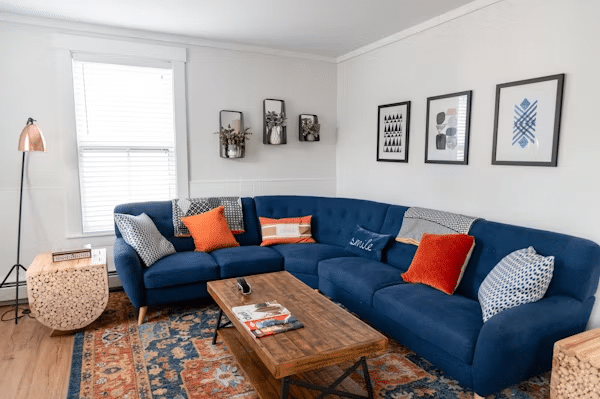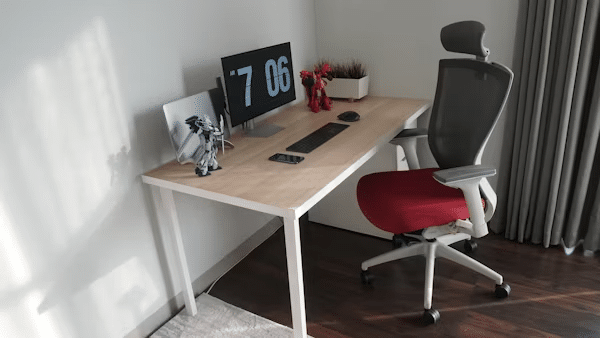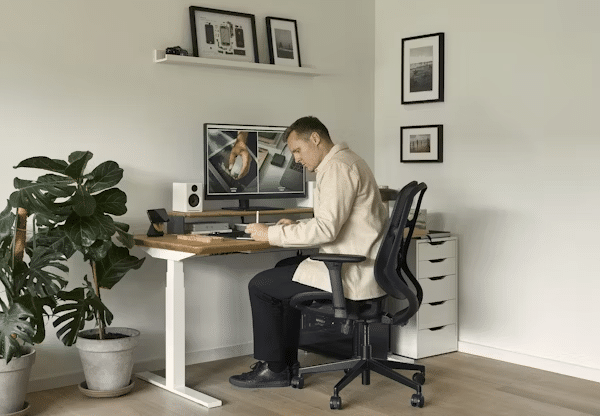Your home should be more than just four walls and a roof—it’s your personal sanctuary, your productivity hub, and the backdrop to your daily life. Yet many people struggle with making furniture choices that truly serve their needs. Walk into most homes, and you’ll find mismatched pieces that looked good in the showroom but don’t quite work in real life, or worse, furniture that sacrifices comfort for aesthetics.
The truth is, selecting the right furniture isn’t about following trends or filling empty spaces. It’s about understanding how you actually live, work, and relax in your home. Whether you’re furnishing a new place or rethinking your current setup, the furniture you choose directly impacts your quality of life—from your productivity levels to your physical comfort and even your mental wellbeing.
This guide takes you through the essential considerations for creating genuinely functional living spaces, room by room. We’ll explore practical strategies for choosing furniture that works with your lifestyle, not against it, and discover how thoughtful furniture selection can transform ordinary rooms into spaces you genuinely love spending time in.
The Living Room: Your Home’s Social Heart
The living room serves as the cornerstone of family life and social gatherings. It’s where you decompress after long workdays, where kids sprawl out for movie nights, and where guests naturally gravitate during visits. Yet this multipurpose nature makes it one of the trickiest spaces to furnish well.
Most people default to the standard sofa-and-coffee-table combo, but this arrangement often leaves awkward dead spaces or creates traffic flow issues. The key is thinking about how the room actually gets used. Do you host large gatherings? Do family members tend to spread out while watching TV? Does someone need to walk through this room to access other areas of the house?
For many Australian homes, particularly those with open-plan designs, the traditional straight sofa simply doesn’t cut it. You end up with people perched uncomfortably at angles, unable to see each other properly or engage in natural conversation. This is where sectional seating configurations really shine, offering flexibility that standard sofas can’t match.
A well-chosen corner lounge can completely transform how your living room functions. Unlike traditional sofas that leave you with awkward L-shaped gaps in corners, sectional pieces wrap around the natural contours of your room, maximizing seating capacity without making the space feel cramped. They create natural conversation zones where everyone can see each other comfortably—no more twisting around to talk to the person at the other end of the sofa.
The beauty of sectional furniture lies in its adaptability. Many modern designs feature modular components that you can rearrange as your needs change. Hosting a party? Push the sections further apart to create better flow. Movie night with the family? Pull them together into a cozy configuration. Some pieces even include built-in storage or convert into guest beds, adding functionality without requiring additional furniture.
When selecting sectional seating, consider the room’s proportions carefully. Measure twice, buy once—there’s nothing worse than discovering your dream section overwhelms the space or blocks doorways. Pay attention to arm heights and back styles too. Lower profiles work beautifully in rooms with standard ceiling heights, making spaces feel larger and airier, while higher backs provide better support for extended lounging sessions.
Fabric choice matters more than most people realize. Light colors might look stunning in photos, but if you’ve got kids, pets, or simply enjoy eating while watching TV, you’re setting yourself up for constant cleaning stress. Performance fabrics have come a long way—many now offer the look and feel of natural materials with superior stain resistance and durability.

Designing Your Home Office: Where Productivity Meets Comfort
The rapid shift to remote and hybrid work has transformed spare bedrooms and forgotten corners into essential workspaces. Yet many people still treat their home office as an afterthought, cobbling together makeshift setups that leave them with chronic neck pain, poor posture, and declining productivity.
Your workspace furniture directly influences your work quality and physical health. That dining table you’ve been using as a desk? It’s probably the wrong height. That decorative chair you grabbed from another room? It’s likely destroying your back. And that cluttered surface where you can barely find space for your laptop? It’s definitely killing your focus.
Creating an effective home office starts with understanding your specific work requirements. Are you on video calls all day, requiring a professional backdrop? Do you work with multiple monitors? Do you need substantial surface area for spreading out documents, or do you primarily work digitally? The answers to these questions should drive your furniture decisions, not the other way around.
Desk selection represents one of the most critical choices you’ll make for your home office. Standard retail desks often fall short because they’re designed for average users performing average tasks—but your work isn’t average, and neither should your workspace be. This is where custom office desks become invaluable, allowing you to specify exact dimensions, storage configurations, and features that match your workflow.
Custom solutions let you address those frustrating little problems that standard furniture ignores. Need power outlets integrated into your desk surface so you’re not constantly crawling under the desk? Done. Want a specific height that accommodates your frame without requiring a footrest? Absolutely. Require specialized storage for equipment, supplies, or files that doesn’t exist in off-the-shelf options? Custom work makes it possible.
The investment in properly designed office furniture pays dividends in unexpected ways. When your desk height aligns perfectly with your seated position, you naturally maintain better posture throughout the day. When everything has a designated place, you spend less mental energy managing clutter and more energy on actual work. When your workspace feels intentionally designed rather than thrown together, you approach your workday with greater focus and professionalism.
Consider ergonomics beyond just the desk itself. Monitor placement, keyboard position, and lighting all interact with your desk setup to create either a comfortable, productive environment or a recipe for repetitive strain injuries. Your desk should accommodate these elements harmoniously, with sufficient depth to position your monitor at arm’s length and enough surface area to maintain an organized workspace without feeling cramped.
Cable management deserves serious attention in any home office setup. Nothing undermines a professional workspace faster than a tangled mess of cords snaking across your desk and down to power strips on the floor. Look for desk designs that incorporate cable routing solutions—grommet holes, cable trays, or built-in channels that keep wires organized and out of sight.

The Often-Overlooked Foundation: Seating That Actually Supports You
While we obsess over desk styles and room aesthetics, the chair we sit in often becomes an afterthought—”I’ll just use whatever’s available and upgrade later.” This backwards thinking leads to unnecessary physical discomfort and can contribute to long-term health issues. Your chair isn’t just furniture; it’s a tool that directly affects your body’s wellbeing throughout the workday.
Standard office chairs work acceptably for average users with no specific physical considerations, but life doesn’t always fit into “standard” categories. Many people face unique challenges that conventional seating simply can’t address—chronic back problems, mobility limitations, recovery from injuries, or conditions that require specialized support. For these situations, specialized seating isn’t a luxury; it’s a necessity for maintaining independence and comfort.
The market for adaptive and ergonomic seating has evolved tremendously in recent years. Where once your options were limited to medical-looking equipment that screamed “healthcare facility,” today’s designs successfully blend therapeutic functionality with attractive aesthetics. This shift means you don’t have to sacrifice your home’s style to accommodate physical needs.
Adjustability represents the cornerstone of truly supportive seating. The ability to modify seat height, backrest angle, armrest position, and lumbar support allows a single chair to serve multiple users or accommodate a single user throughout different activities and times of day. What works perfectly for morning desk work might need adjustment for afternoon video calls when you want to sit more upright and engaged.
For individuals with disabilities or mobility challenges, the right seating can dramatically impact daily life quality. Being able to shop adjustable chairs for disabled users that offer specialized features—like higher weight capacities, wider seats, or mechanisms that assist with standing and sitting—means the difference between struggling through daily activities and moving through your home with confidence and comfort.
These specialized chairs often incorporate features that benefit everyone, not just those with diagnosed conditions. Pressure-relief cushioning, for instance, helps anyone who sits for extended periods, preventing the numbness and discomfort that comes from sustained compression. Extra lumbar support benefits not only those with back problems but anyone who wants to prevent them. Sturdy armrests assist people with arthritis while also providing helpful support when you’re simply tired at the end of a long day.
Don’t overlook the importance of testing chairs before purchasing when possible. What feels comfortable for ten minutes in a showroom might reveal discomfort issues after an hour of actual use. Pay attention to how your body feels in different positions—sitting upright for focused work, leaning back during phone calls, shifting weight from side to side during long meetings. A truly good chair accommodates all these natural movements without fighting against them.
Beyond the office, consider seating throughout your home through this same lens of support and adjustability. Dining chairs, living room recliners, and even bedroom seating should offer appropriate support for how you actually use them. Nobody should finish dinner with an aching back or wake up stiff after reading in bed before sleep.

Bringing It All Together: Creating Cohesive, Functional Spaces
Furnishing a home isn’t about collecting individual pieces that look good in isolation—it’s about creating an ecosystem where every element serves both practical and aesthetic purposes. The most successful interiors share a common trait: intentionality. Every piece was chosen for specific reasons beyond “it looked nice” or “it was on sale.”
Budget considerations shouldn’t be ignored, but remember that furniture represents a long-term investment in your daily comfort and productivity. That slightly more expensive desk that’s built to your exact specifications will serve you better for years than a cheap standard option you replace three times. That quality ergonomic chair that costs more upfront will save you money in massage appointments and pain relief medication down the line.
Consider the lifecycle of furniture decisions too. What works perfectly now might not suit your needs five years from now. Modular and adjustable pieces offer flexibility as your circumstances change—whether that’s a growing family, shifting work requirements, or evolving physical needs as you age. Building in adaptability means you won’t need to replace entire furniture sets when life inevitably changes.
Don’t underestimate the psychological impact of well-chosen furniture. When your home functions smoothly—when you can work comfortably, relax properly, and move through spaces without frustration—it affects your overall wellbeing in subtle but meaningful ways. The constant low-grade irritation of poorly functioning spaces accumulates over time, while the quiet satisfaction of a well-designed home provides daily dividends of comfort and peace.
Your home should work for you, not the other way around. Take the time to choose thoughtfully, invest in pieces that genuinely serve your needs, and don’t be afraid to prioritize function alongside form. The result will be spaces that not only look good but feel right—rooms you’re genuinely happy to spend time in, furniture that supports your body and your lifestyle, and a home that truly feels like yours.
The furniture choices you make today shape your daily experience for years to come. Choose wisely, choose honestly, and choose with your real life in mind.
